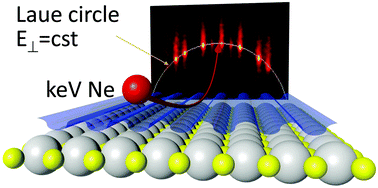Grazing incidence fast atom diffraction (GIFAD) at surfaces has made rapid progress and has established itself as a surface analysis tool where effective energy E⊥ of the motion towards the surface is in the same range as that in thermal energy atom scattering (TEAS). To better compare the properties of both techniques, we use the diffraction patterns of helium and neon atoms impinging on a LiF (001) surface as a model system. E-Scan, θ-scan, and ϕ-scan are presented where the primary beam energy E is varied between a few hundred eV up to five keV, the angle of incidence θi between 0.2 and 2° and the azimuthal angle ϕi around 360°. The resulting diffraction charts are analyzed in terms of high and low values of effective energy E⊥. The former provides high resolution at the positions of the surface atoms and the attached repulsive interaction potentials while the second is sensitive to the attractive forces towards the surface. The recent progress of inelastic diffraction is briefly presented.
